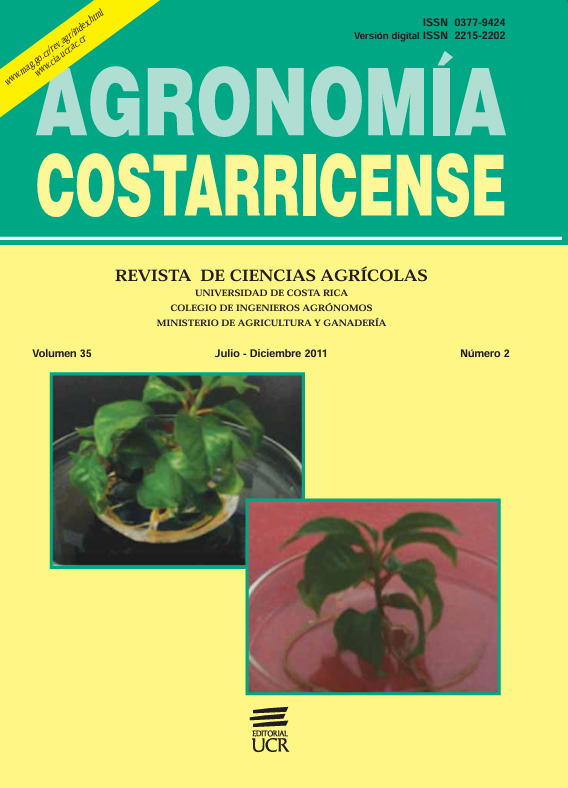Abstract
Postharvest quality, chemical composition and antioxidant activity were evaluated on peach palm fruit harvested at 97, 106 and 120 days after blooming. Based on the respiration pattern, peach palm appears to be a non-climacteric fruit, which has a high respiration rate (30 45 mg.kg-1.h-1 CO2 a the beginning of storage (12°C) and 80 mg.g-1.h-1 CO2 at the end of storage, which implies a short pos-harvest life. External color, pulp color, pulp firmness, soluble solids content, fat content and antioxidant capacity were influenced by harvest age in recently-harvested fruit. There was no effect of harvest age on the content of starch and carotenoids. External color index, respiration values and soluble solids content increased during postharvest storage, while pulp firmness declined. Low acidity contents were found, without significant changes during storage. Using the ORAC method it was determined that the fruit has a high antioxidant capacity 16.18 µmol TE/g on a humid basis, which is higher than reported in other fruits (mango 10.02 µmol TE/g, pineapple 7.93 µmol TE/g, tomato 4.60 µmol TE/g). The youngest fruit (97 days) exhibited the highest antioxidant capacity on both dry basis (58,08 µmol TE/g) and humid basis (16,18 µmol TE/g).
##plugins.facebook.comentarios##

This work is licensed under a Creative Commons Attribution-NonCommercial-NoDerivatives 4.0 International License.
Copyright (c) 2016 Agronomía Costarricense


